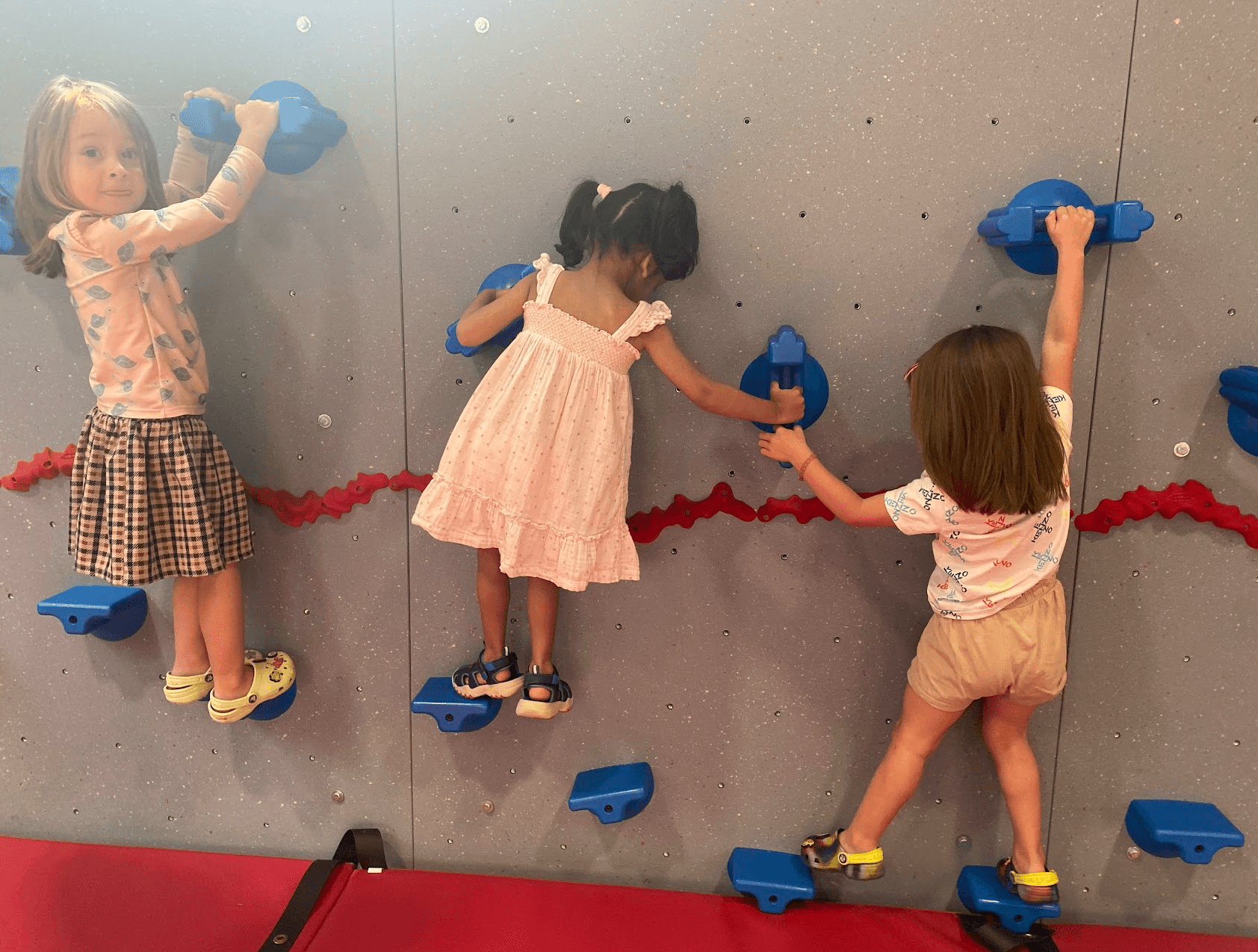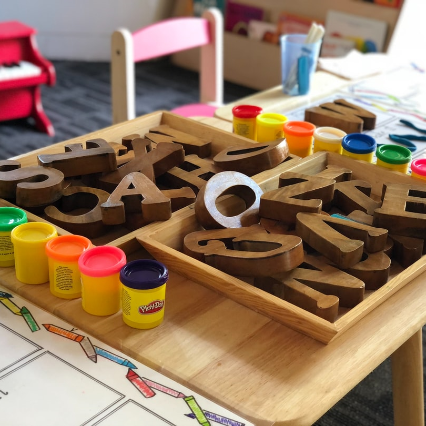
2s Program
Overview
The 2s curriculum focuses heavily on gentle separation from parents and caregivers and the development of a strong social/emotional foundation. Entry into our 2s program is typically a child’s first introduction to a school-like atmosphere and we strive to make a smooth transition from the home to our school. It is our goal for the children to see their school as an extension of their home. As such, separation from parents and caregivers is done gently and gradually so that the children can begin to feel safe and comfortable in their learning environment. Our two year olds are guided through their social interactions and provided appropriate modeled behavior. At two years old, children are still engaging in a significant amount of parallel play but they do begin to find themselves interacting with one another more and more. The 2s are great observers and watch their teachers closely as they lead by example in appropriate treatment of the classroom materials, of each other and in behavior. Throughout the year, the children begin to understand what it means to be part of a school community where everyone is respected and everyone is loved. Their social interactions are closely monitored and the teachers are there to scaffold appropriate and kind communication.
Building a sense of independence and confidence is also a major focus of our 2s program. One of the ways this sense of independence is achieved is through focusing on self-help skills. Accomplishing tasks such as potty training, hand washing, water pouring, conflict resolution and independent exploration of the classroom contributes to the children feeling a sense of ownership and control over the space. Much of the 2s classroom time is spent engaged in the exploration of exciting materials through hands on sensory-based activities. At this age the children are learning so much about the world through the use of their five senses. A rich variety of sensory materials keeps them highly stimulated and engaged throughout the day. As in all of our classrooms our teachers are always listening closely to the children’s interests in order to determine an appropriate time to explore a subject further and begin a project (e.g. feelings, siblings, color mixing, animals, cars, etc.). These explorations can be as short as a week and last as long as the children remain interested.
2s Schedule
2s Programming
The 2s schedule is structured but open to flexibility based on the needs of the children. The children slowly enter the classrooms with their parents, saying goodbye in a way that feels comfortable for them. Open activities are available on the tables and the classroom centers are available for exploration. Once the children have all arrived, a transitional warning is given and the children clean up with the help of their teachers. Much of the transitional time is spent singing. They then gather on the rug for a short check-in group meeting where they discuss the schedule for the day and any special activities they might be able to expect that day. Whenever the children come together as a group it provides the class an opportunity to discuss themes that have arisen and topics of general interest.
Each day consists of a meeting time on the rug, an open play session, a visit to the garden or gym, a communal snack experience, a read aloud story, a musical experience, and weekly they are visited by a supplemental activity specialist. By the middle of the year, once the children have become accustomed to the routine of the day, the teachers begin to integrate the role of classroom jobs, which initiates their sense of responsibility as members of the classroom and the school at large.
2’s Program Curriculum Overview
2s Curriculum
Area
Concept & Theme
Activities & Experiences
• Gross Motor: Large muscle development, coordination, and control including arms, legs and torso
• Climbing/running/jumping
• Balancing
• Hopping
• Dancing
• Building with blocks
• Beginning of cooperative movement games
• Taking turns
• Small Motor: Beginning opportunities to develop dexterity and manipulation of smaller muscle groups including hands and fingers
• Potty training, hand washing, nose blowing
• Using table toys and manipulatives
(e.g. peg boards, blocks, puzzles, beads, Legos)
• Play dough
• Art materials
• Cooking
• Water & sand play
• Drawing
• Community
• Developing Self-Control
• Separation, security and safety
• Developing self-awareness, self-confidence and independence
• Relationship of self to group
• Learning a process to solve conflicts
• Working together
• Accepting limits
• Learning group rules
• Learning the schedule
• Working as a group to achieve a goal
• Group discussions about families, friendship and group responsibilities
• Listening and discussing stories
• Circle time
• Making class books
• Free play
• Conflict resolution process
• Singing
• Discussing
• Listening
• Observing and experimenting with sounds of language
• Group meetings
• Listening to others
• Giving your opinion
• Awareness of classmates names
• Singing and rhyming games
• Poems
• Drawing
• Making class books
• Story dictation and story time
• Counting
• Size and Shape
• Mathematical Language
• Comparing, Sorting, Ordering
• Taking attendance
• Counting songs
• Block area
• Color cubes
• Helping with snack/ one-to-one correspondence
• Cooking
• Life cycles
• Body awareness
• Exploring our natural world
• Exploring light and shadows
• Using our senses
• Mixing colors
• Seasons
• Natural and found object explorations
• Cooking
• Listening
• Following Multiple Step Tasks
• Gross Motor Development
• Appreciation of music
• Waiting your turn
• Sense of body in space
• Running, stretching, etc.
• Fine motor
• Creativity
• Using brushes and scissors
• Discussing the art projects of peers
• Exploration of different mediums including clay, paper, paint, etc.
New Header
This is my new paragraph.
Let's build a bright future for your child!
Start the application process now!
Our Other Programs

3s Program

